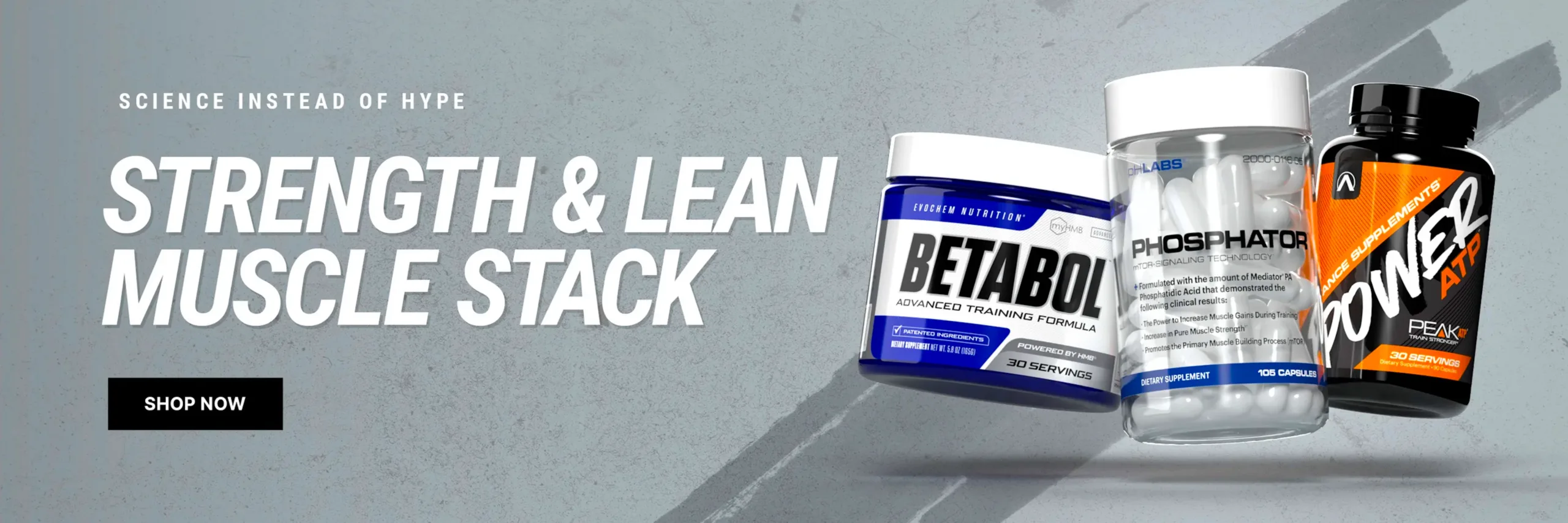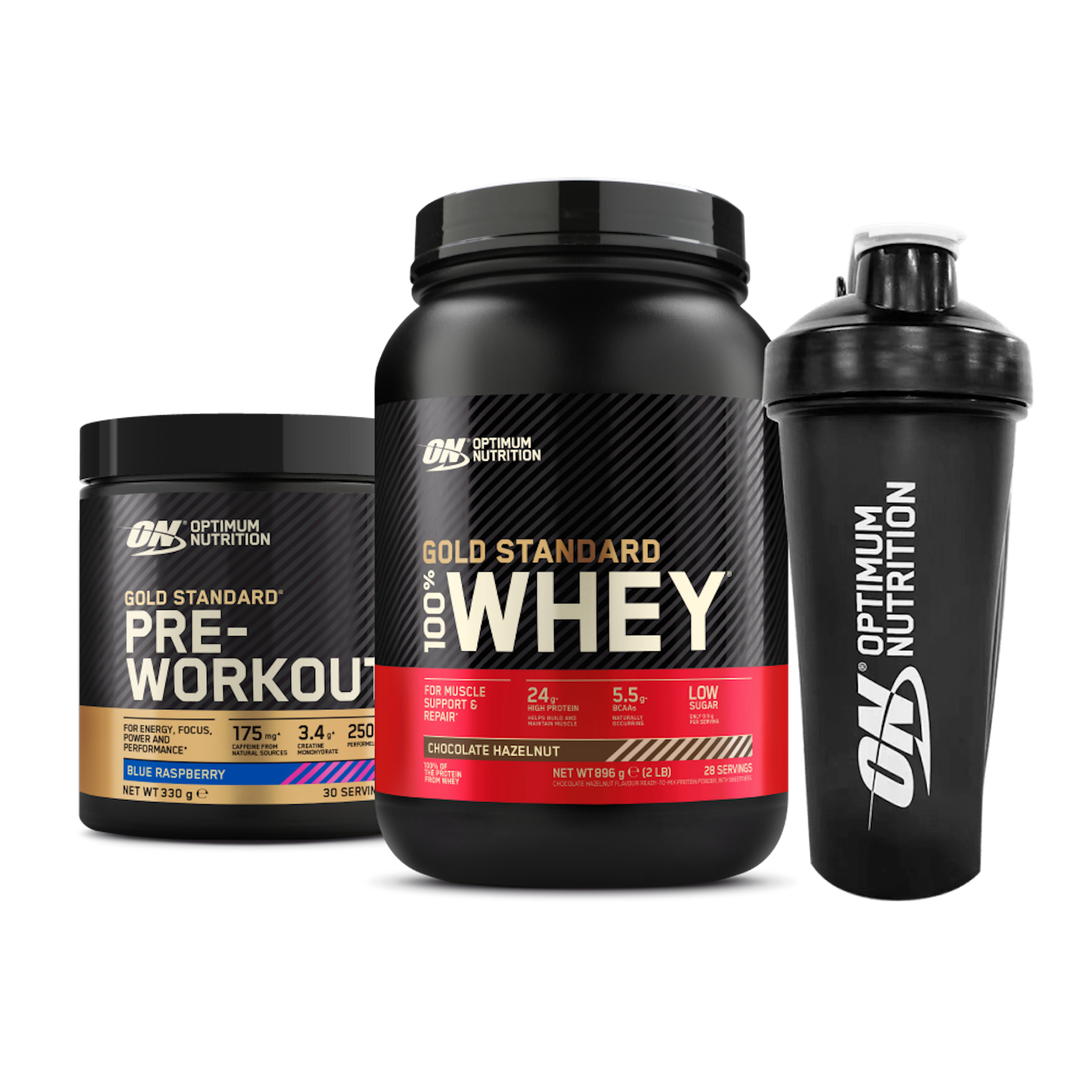The rhomboids, often overshadowed by their larger neighbors the traps, are a crucial muscle group in the upper back. Strong rhomboids contribute to good posture, support shoulder health, and even improve athletic performance. However, due to our modern lifestyles that often involve hunching over desks or phones, rhomboids can become weak and underdeveloped.
The rhomboids aren’t the biggest back muscle, but they are one of the most important. In this article, we reveal why and how to train this small but essential body part.
When it comes to back training, most people tend to focus on their latissimus dorsi or lats for short. That makes a certain amount of sense because it’s the lats that give your back most of its size.
However, there are other back muscles you need to develop if you want a great looking back. Well-built traps give your back thickness, and strong erector spinae muscles will improve your lifting performance and reduce the risk of back pain and injury.
Another muscle you need to consider when designing your back training plan is your rhomboids.
This article will guide you through the 10 best exercises you can incorporate into your workout routine to strengthen your rhomboids and achieve that coveted upper back definition.
Understanding the Rhomboids
Before diving into exercises, let’s understand the role of the rhomboids. These diamond-shaped muscles lie beneath the larger trapezius muscles in the middle of your upper back. Their primary function is to retract (pinch together) and elevate your shoulder blades. This movement helps maintain proper posture by preventing your shoulders from rounding forward, a common problem associated with hunching. Strong rhomboids also assist in pulling movements like rows and contribute to overall shoulder stability.
-
Rhomboid Anatomy 101
The muscles of the human body often have complicated-sounding names. However, in the majority of cases, those names actually reveal interesting facts about them, often making them easier to locate and identify.
For example, biceps brachii means two-headed arm muscle, and pectorals major means large chest muscle. Latissimus dorsi means side back muscle. The rhomboids are so-called because they are shaped like rhombi.
There are actually two rhomboid muscles – major and minor. Rhomboid major is the larger of the two, and rhomboid minor is located just above it. They run diagonally from your cervical and thoracic spine to the edge of your scapulae or shoulder blades (1).
Because rhomboid major and minor work together, it’s rarely necessary to differentiate between them. So, for this article, we’ll be referring to these muscles simply as the rhomboids.
It’s also important to understand that it’s impossible to fully isolate the rhomboids, as they always work with the middle fibers of the trapezius muscle. For that reason, all mid-trap exercises are also rhomboid exercises, and vice versa.

For such a small, thin muscle, the rhomboids have some important functions:
- Retraction of your shoulder girdle
- Keeping the scapulae flat against the ribcage
- Elevation of the shoulder girdle
The rhomboids don’t contribute much to the size of your upper back. However, they are essential for shoulder girdle stability, function, and posture. Working with your middle trapezius, they pull your shoulders back and into a strong and stable position.
That’s because pulling your shoulders down and back, something you need to do with most strength training exercise puts your shoulders in an anatomically strong position. Weak rhomboids are a common cause of shoulder joint pain and can also reduce exercise performance.
The rhomboids are indirectly involved in the most upper body and many lower body exercises too. But you may also benefit from training them more directly.
Check Out Our List Of The Best Supplements For Building Muscle, Shredding Muscle, Recovery, And Great Health, and Wellness Products! Purchase ifbnewsfeed.org‘s apparels Here: ifbnewsfeed.org
 10 Best Rhomboid Exercises You Should implement in Your Workout:
10 Best Rhomboid Exercises You Should implement in Your Workout:
There are plenty of rhomboid exercises to choose from. Here are TEN of the best movements for working this small but crucial group of muscles.
1. Band Pull-aparts
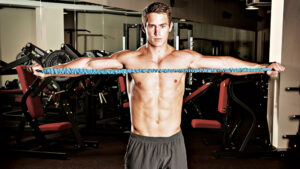
How to do it:
- Hold your resistance band with an overhand, shoulder-width grip. Raise your arms in front of you, so your hands are roughly level with your shoulders. Pull your shoulders down and back.
- Open your arms and stretch the band out across your chest.
- Return to the starting position and repeat.
- You can work your rhomboids from different angles by changing the angle of your arms and stretching the band diagonally across your chest and not just horizontally.
2. Face Pulls

Face pulls are a very effective rhomboid, mid-traps, and posterior deltoid exercise. You can do them using a cable machine or a resistance band, which is a good option for home and garage trainers.
The key to successful face pulls is doing them strictly. Keep your torso still and focus on pulling your shoulders back. Using heavy weights and cheating the weight up will take tension away from the target muscles.
3. Wide-grip Barbell Bent-over Rows
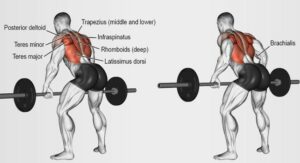
All horizontal rowing exercises involve your rhomboids. That’s because, to do them, you must pull your shoulders back, providing your arms with a stable platform to work from. However, to maximize rhomboid recruitment, wide grip rows work best as they involve more shoulder girdle and scapular retraction than narrow grip rows.
How to do it:
- Hold your barbell with a wider than shoulder-width overhand grip. Stand with your feet between shoulder and hip-width apart, knees slightly bent for balance.
- Hinge forward from the hips and lean forward until your torso is roughly parallel to the floor. Let your arms hang straight down from your shoulders. Pull your shoulders down and back and brace your abs. Do not let your lower back round.
- Bend your arms and pull the bar up and into your chest. Keep your elbows out and level with your shoulders.
- Extend your arms and repeat.
4. Wide Grip Seated Cable Rows

While bent over barbell rows are an excellent rhomboid exercise, they can be hard on your lower back. Seated cable rows are similarly effective but much more lower back-friendly. You can do this exercise using a long, straight bar, but you may find it more comfortable with a parallel grip bar.
How to do it:
- Sit on the bench with your feet on the footrest. Your knees should be slightly bent. Grip the handle with a wider than shoulder-width overhand grip. Sit up tall and pull your shoulders down and back.
- Bend your arms and pull the bar into your chest. Keep your elbows up and roughly level with your shoulders.
- Extend your arms and repeat.
5. Resistance Band Rows
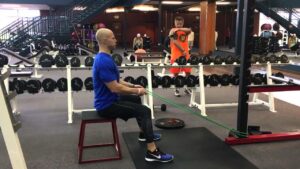
No barbell? No cable machine? No problem! You can replicate most rowing exercises with a resistance band.
Use a resistance band to do:
- Bent over wide grip rows
- Seated wide grip rows
- Standing wide grip rows
6. Reverse Dumbbell Flyes
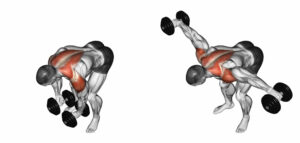
Reverse dumbbell flyes are generally viewed as a posterior deltoid exercise. However, because they involve shoulder girdle retraction, they’re also a useful rhomboid exercise.
Don’t go too heavy with this exercise; using too much weight will invariably result in cheating, taking stress off the target muscles. Go light, and really focus on squeezing your shoulders back and together.
Reverse dumbbell flyes can be done standing or seated, and also lying face down on a bench. This final version is arguably the most effective because it eliminates all lower body movement, making it a much stricter exercise.
7. Reverse Cable Flys
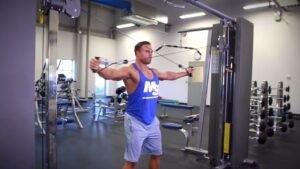
Dumbbell reverse flyes are a useful exercise, but they don’t keep your muscles under constant tension. Cables are potentially more effective because your muscles have to work through the whole range of motion.
How to do it:
- Stand between a cable crossover machine. Hold the left handle in your right hand and the right handle in your left hand. Extend your arms out in front of you, with your palms facing inward. Bend your arms and then keep them rigid. Pull your shoulders down and back.
- Open your arms until your hands are slightly behind your shoulders.
- Return to the starting position and repeat.
- You can also do this exercise lying face-up on an exercise bench instead of standing.
8. Chest Supported Shrugs
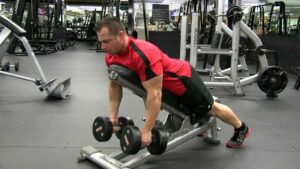
Chest supported or prone shrugs are an isolation exercise, which means they only involve one joint. If your biceps are tired or pumped from lots of rows and pulldowns, or you just want to work your mid-back using a different type of exercise, this is the movement for you.
How to do it:
- Set an exercise bench to around 45 degrees. Lie face down on the bench with a dumbbell in each hand. Let your arms hang down from your shoulders. Turn your wrists, so your hands are facing inward.
- Without bending your arms, shrug your shoulders back and together. Hold this contraction for 2-3 seconds.
- Lower the dumbbells back toward the floor and repeat.
- You can also do this exercise with a barbell and an overhand grip.
9. Wide Grip Inverted Rows

A lot of people see inverted rows as a progression toward doing pull-ups and chin-ups. While it IS useful for this purpose, it’s also a good exercise in its own right.
The inverted row is great for hitting the middle part of the trapezius, posterior deltoids, and the lats. But, done with a wider than shoulder-width overhand grip, they’re an effective rhomboid exercise too.
10. Scapular Wall Slides
Scapular wall slides, also known as wall angels, are a surprisingly tough rhomboid, middle trapezius, and posterior deltoid exercise. Instead of working your muscles with weights, for this movement, you’ll be working against the tension generated by your pecs.
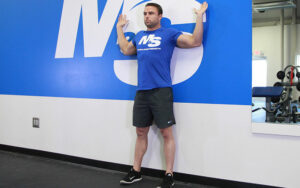
The tighter your pecs are, the harder you’ll find this exercise. So, as well as working your upper back, scapular wall slides also provide your chest with a useful stretch. Scapular wall slides are an excellent postural exercise. If your posture needs work, do this exercise every day.
How to do it:
- Stand with your back against a smooth wall. Your feet should be slightly in front of your hips; knees bent for stability.
- Raise your arms and, with your elbows bent to 90 degrees, press them against the wall. Your upper arms should be parallel to the floor. Press your lower back into the wall.
- From this position and keeping your arms and the backs of your hands against the wall, slide your hands upward. Reach up as far as you can while maintaining the pressure against the wall.
- Slide your hands back down and repeat.
- If you find this exercise too hard, do it while lying on the floor instead.
Wrapping Up
When it comes to the muscles of the human body, size does not always dictate importance. Sure, big biceps, cannonball deltoids, and massive quadriceps are impressive, but small body parts like the rhomboids also have a crucial role to play.
The major and minor rhomboids get a workout whenever you do rows and deadlifts, but if yours are weak, they deserve some extra attention. Strengthening your rhomboids can improve your performance, reduce your risk of a shoulder injury, and correct your posture.
References:
1. PubMed: Anatomy, Back, Rhomboid Muscles https://www.ncbi.nlm.nih.gov/books/NBK534856/
More About the Best Tricks To Build Broader, Stronger Lats Contents
- “B-Stance Deadlifts Exercises Guide”, The Benefits Of The “B-Stance Deadlifts Exercises” & How To Do The “B-Stance Deadlifts Exercises”
- Build a Back You Can Be Proud Of: A Comprehensive Guide to “Back Training” & Understanding Your “Back Muscles”
- How To Build A Massive Back With T-Bar Rows: “How-To, Muscles Worked, And Variations”
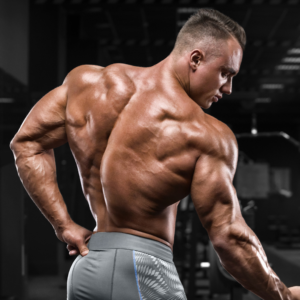
- Get $200 With Your 1st Order Because Your Health Matters
- Best Supplements For Muscle Building, Strength & Champion Performance
- Best Supplements For Intense Energy, Performance & Endurance
For More News And Daily Updates, Follow IFBNewsfeed.Org on Facebook, Twitter, and Instagram. Comment, Like, And Share With Everyone Who May Need To Be Updated With The Most Recent Fitness/Bodybuilding/Powerlifting And CrossFit News.

